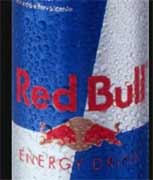
FRIDAY, June 17 (HealthDay News) — The near death of a German teenager who consumed huge amounts of energy drinks mixed with vodka highlights the largely unrecognized danger of such beverage combinations, researchers report.
The 17-year-old boy suffered acute kidney failure and was hospitalized for 10 days following the incident, when he drank one liter of vodka combined with three liters of energy drinks. He told authorities he was trying to improve the outcome of two 100-meter races he ran at school, after which he experienced vomiting and dizziness and was rushed by ambulance to the hospital.
The case study is published in the July print issue of Pediatrics.
“This is another classic case of teenage binge drinking and another warning for parents that . . . it can go to extremes and be fatal or near-fatal,” said Cecile Marczinski, whose similar research on alcohol’s interaction with energy drinks is published online and in the July 2011 print issue of Alcoholism: Clinical & Experimental Research. “You have no idea how intoxicated you really are, so you drink far more than you would ever consume had you not combined them. This case is a perfect example of that.”
Study author Dr. Isabelle Schoffl said the boy ingested 380 grams of alcohol, 780 milligrams of caffeine and 4,600 milligrams of taurine in the four-liter combination. Taurine is an amino acid that helps regulate water and mineral salt levels in the blood. The taurine seemed to overwhelm the patient’s kidneys, necessitating temporary dialysis treatments.
The fact that he was able to buy one-liter bottles of energy drinks — which are normally sold in smaller cans in Europe and the United States — suggested there was no harm to drinking such large amounts, she wrote in the study.
The American Academy of Pediatrics issued a statement last month that children and teens should avoid energy drinks, the hazards of which are being increasingly scrutinized. Ready-made alcoholic beverages with added caffeine were banned by the U.S. Food and Drug Administration in November 2010 after a year-long review of scientific literature.
Marczinski noted that energy drink containers are becoming larger, with the popular Red Bull brand now available in a nearly 17-ounce can, about twice its original size. The German boy probably did not realize he was also consuming about 22 shots’ worth of vodka, Marczinski said, which she calculated a one-liter bottle contains.
“I don’t think he would have done 22 shots of vodka without the [influence of] the energy drinks,” said Marczinski, also an assistant professor in the psychology department at Northern Kentucky University.
Bruce Goldman, director of substance abuse services at Zucker Hillside Hospital in Glen Oaks, N.Y., said he thinks the boy’s massive alcohol consumption posed greater risk than the energy drinks, but the combination is doubly dangerous.
“Bottom line, anything that makes it easier for kids or young people to consume large quantities of alcohol is very dangerous,” Goldman said. “To me, the danger is in the alcohol. The kids don’t realize they’re putting themselves at grave risk.”
More information
The Century Council has more about underage drinking.

